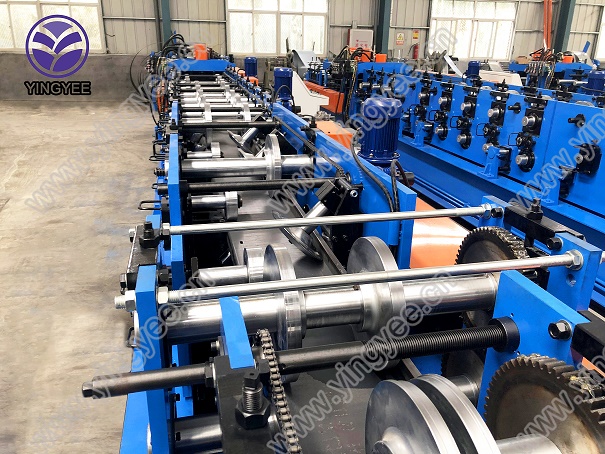
Understanding the Coil Slitting Line Process
The coil slitting line is an essential component in the metal processing industry, specializing in cutting large rolls of metal sheets, known as coils, into narrower strips of specific widths. This process is crucial for various applications, including automotive manufacturing, construction, and appliance production. Understanding the coil slitting line's operation, components, and benefits can offer insights into its critical role in manufacturing and supply chain processes.
The Process of Coil Slitting
The coil slitting process begins with the unwinding of a large coil mounted on a pay-off reel. The coil, often made of steel, aluminum, or other metals, is fed through a series of rollers and guides to ensure proper alignment as it enters the slitting section of the line. The slitting head contains multiple rotary blades that slice the coil into predetermined widths. These blades can be adjusted based on the desired strip size and are typically made of high-speed steel or carbide to withstand the rigors of cutting.
Once the slitting is complete, the narrower strips are then wound back onto separate reels. This winding process must be done carefully to prevent damage to the cut strips and ensure they are properly aligned and tensioned. The resulting strips can vary in thickness, width, and material properties, depending on the requirements of the end user.
Components of a Coil Slitting Line
A typical coil slitting line consists of several key components that work in harmony to execute the slitting process efficiently
1. Uncoiler This component handles the initial coil, ensuring smooth unwinding as the metal sheet is processed.
2. Entry and Exit Guides These guides keep the coil aligned throughout the process, minimizing the risk of misalignment and ensuring a clean cut.

4. Tension Control System Maintaining the right tension throughout the process is vital to avoid material wrinkling or deformation. This system adjusts the tension on the coil as it is unwound and during the slitting operation.
5. Recoiler This component winds the slit strips onto separate cores, ensuring they are packaged appropriately for shipping or storage.
Benefits of Coil Slitting Lines
The implementation of coil slitting lines in manufacturing offers numerous advantages. First and foremost, they enhance efficiency by automating the slitting process, reducing manual labor and potential human error. The precision of modern slitting lines allows for accurate cuts, minimizing waste and ensuring that product specifications are consistently met.
Moreover, coil slitting lines contribute to flexibility in production. Manufacturers can quickly switch between different strip sizes and materials, responding to varying customer demands without significant downtime. This adaptability is especially critical in industries that require just-in-time production and delivery.
Finally, investing in a coil slitting line can lead to cost savings in the long run. By streamlining operations, reducing waste, and optimizing material use, manufacturers can achieve better profitability. Furthermore, having the capability to produce custom strip sizes in-house can reduce the need for external suppliers and lower overall supply chain costs.
Conclusion
The coil slitting line plays a pivotal role in the modern manufacturing landscape, serving as a sophisticated solution for cutting metal coils into usable strips. With its array of components working seamlessly together, the slitting line enhances efficiency, precision, and flexibility. For businesses in need of high-quality metal strips, understanding and incorporating coil slitting technology is not just an operational strategy; it is a step towards fostering improved productivity and competitiveness in the marketplace.